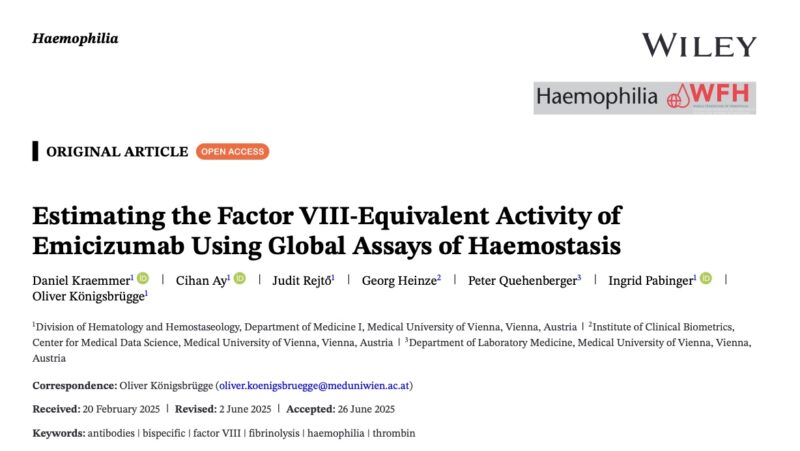
Nathan Connell: What Is The “Mild Equivalent” For Hemophilia A That Is Achieved While on Emicizumab?
Nathan Connell, MD, MPH, FACP, Clinical Chief of Hematology at Brigham and Women’s Faulkner Hospital, shared an insightful post on LinkedIn:
”A common question that comes up in hemophilia clinic is: What is the “mild equivalent” for hemophilia A that is achieved while on emicizumab? We know that secondary hemostasis isn’t completely normalized for people taking emicizumab, but patients often ask what their (equivalent) factor VIII level would be if it could be measured. At its most basic, disorders of secondary hemostasis are rooted in an inability to generate thrombin, so thrombin generation assays (TGAs) are theoretically an attractive method to offer a window into the answer for this question; however, differences in TGAs and lack of standardization make it difficult to settle on a single number.
This Haemophilia Journal publication by Daniel Kraemmer and colleagues (including Cihan Ay) highlights the heterogeneity in estimates depending on which TGA parameters are utilized in the analysis, and suggests a conservative estimate is anywhere from 15% – 37%, supporting clinical experience with the therapy but highlighting the need for better methods to assess hemostasis in vivo.”
Read the full article here.
Article: Estimating the Factor VIII-Equivalent Activity of Emicizumab Using Global Assays of Haemostasis
Authors: Daniel Kraemmer , Cihan Ay, Judit Rejtő, Georg Heinze, Peter Quehenberger, Ingrid Pabinger, Oliver Königsbrügge

Stay updated on the latest scientific advancements in the field of hemophilia with Hemostasis Today.
-
Dec 19, 2025, 06:13Anna Aldehag Reflects on Her 12 Year Leadership in Sweden National Board of Health and Welfare
-
Dec 19, 2025, 05:54Abdul Mannan: APTT Mixing Studies Confuse a Lot of People
-
Dec 18, 2025, 23:14The “Normal” FVIII Level Trap in Females with Haemophilia
-
Dec 18, 2025, 23:11WFH Expands Multidisciplinary Bleeding Disorder Training in Vietnam
-
Dec 18, 2025, 17:13Daria Camilli on EuroBloodNet and EHC Collaboration for Bleeding Disorders
-
Dec 18, 2025, 16:50Marie Cambot on Innovhem’s Quantification of The HbF/HbS Ratio for SCD
-
Dec 18, 2025, 16:26Yogesh Rathod on Hematological Issues and ICU
-
Dec 18, 2025, 16:09Carlos Doti: I’m Reminded Why ASH is Such a Powerful Close to The Year
-
Dec 18, 2025, 15:23Michael Hadley: Well-Timed ACC Statement Just Out in JACC Journals
